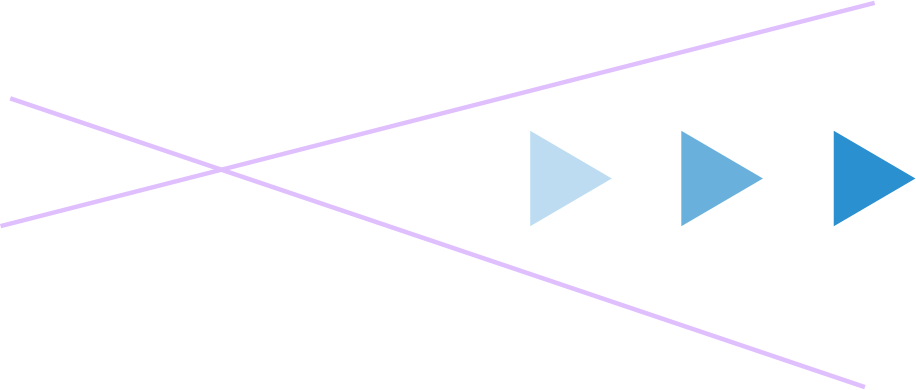Home / Thinking Zone / On the rights of the child
On the rights of the child
Apart from your own, have you ever considered what the concept of childhood might mean?
When does childhood begin? When does it end?
And how has our past treatment of children impacted our present understanding of the world and our place within it?
The history of children’s rights has developed hand in hand with the evolving concept of childhood itself and it could be said that childhood is longer now than it’s ever been. From the moment a child is born to the age of 18, children have a legal right to protection, which should (in theory) recognise their vulnerability within society and make provision for their safety, education and flourishing.
Posted 23 August 2024
Scotland's landmark legislation
In July 2024, Scotland became the first UK nation to incorporate the UN Convention on the Rights of the Child (UNCRC) into domestic law, giving children the legal power to challenge rights violations and mandating public authorities to prioritize children's rights in all decision-making. The new legislation means that all public authorities in Scotland must make sure their policies uphold the rights outlined in the UNCRC and empowers Scottish children and the Children and Young People’s Commissioner with unprecedented legal authority to initiate or intervene in cases concerning children’s rights.
Giving children a ‘voice’ in this way marks an unprecedented step in children’s rights legislation by incorporating the UNCRC directly into domestic law and is a significant shift in its development – a far cry from 18th century Prime Minister William Pitt the Younger’s alleged call to ‘yolk up the children’. But whilst there have been significant improvements in the treatment of children in all areas, there are unfortunately still children across the globe who are the victims of abuse, neglect, poverty and even child labour and slavery - despite almost every country in the world having signed and ratified the UNCRC.
The modern concept of childhood
As previously mentioned, children’s rights are constantly evolving and it is very apparent that our modern concept of childhood is rather different now to what it was, even 100 years ago. In our tech heavy 21st century world, childhood is far more complex than it has ever been, with many distinct stages to it – even before a baby is born there are reportedly many things it is aware of and can be affected by. ‘Tweens’ and ‘teens’ were unheard of until relatively recently and despite all of the protections in place, children are arguably more aware of the ‘adult’ world than ever before.

The social construct of childhood
French historian Philippe Ariès was among the first to cite that the concept of childhood was a social construct and provocatively put forward the notion that childhood wasn’t ‘discovered’ until well after the Middle Ages. His seminal work on the subject, Centuries of Childhood, has been hotly debated since it was written in 1960, and many scholars have subsequently distanced themselves from it, saying that Ariès was mistaken about the understanding of childhood in the Middle Ages and that he relied too heavily on visual sources such as paintings and sculpture for ‘evidence’, as opposed to factual records. Others recognise the piece as a foundational work in the field of children’s history and one which has provided a useful springboard for relevant discussion on the topic.
John Locke and the enlightenment
Whatever their opinion of Ariès, many contemporary academics think that our current notions of childhood start with English philosopher and so-called Father of the Enlightenment, John Locke (1632-1704) – although many references to the concept of childhood as distinct from adulthood do exist previously in the Renaissance, and probably before this too.

Locke's educational theories
In his essay Concerning Human Understanding, Locke introduced the notion of the tabula rasa, or blank slate, in relation to the mind at birth – in contrast to the common opinion at the time that infants were born inherently ’good’ or inherently ‘evil’. In line with Enlightenment attitudes which leant towards scientific reasoning and advanced philosophy, Locke challenged this notion (inherited from the church) and encouraged parents and teachers to treat children as individuals with distinct temperaments, emphasising the importance of nurturing and the development of a ‘virtuous mind’. He was aware of the nature/nurture debate which still rages on today and said that caregivers must set a good example to their children:
You must do nothing before him you would not have him imitate.
Similarly, in his short book Some Thoughts Concerning Education, Locke put forward three methods of educating the mind: the development of a healthy body; the formation of a virtuous character; and the choice of an appropriate academic curriculum. One of his key points in the book was that education should be enjoyable and an important goal of it was to foster productive and positive members of society – not a million miles away from article 28 of the UNCRC which details the right to education.

Locke's influence on Rousseau
Locke was well regarded within educated circles, as his writings chimed with the Enlightenment desire to interpret the world via observation instead of religious dogma, and perhaps the hope that children might be the torch bearers for societal change. He was also a huge influence on Swiss philosopher Jean-Jacques Rosseau (1712-1778), who developed Locke’s theory of being born with a neutral or ‘blank’ slate into the idea that children were born inherently good, and it is society that corrupts them.
Some of Rousseau’s observations can be interpreted as influences on education today – not least his assertion that teaching should be flexible and responsive and based on the natural inclinations of child. The idea of educating the whole person which Locke and Rousseau pioneered has a valuable legacy within many modern child-centred and intentional teaching methods (Dewey; Sook, 2016) and it is also (partly) from Rousseau’s writings that we see the influence on later notions of children as innately ‘pure’. In Émile (on Education), Rousseau describes how children should be able to learn through sensory experience and exploration (led by adults), and described childhood as a brief sanctuary from the perils of an imperfect world – something we can surely all relate to.
Why rob these innocents of the joys which pass so quickly? Why fill with bitterness the fleeting early days of childhood?
Childhood during the Industrial Revolution
However, despite all of this progressive thinking, unless you had money and privilege, children were often viewed as an extra mouth to feed, and by the late 18th century, the British Industrial Revolution saw many children’s education being replaced by a working day as families struggled to survive.
Often working long hours and in dangerous conditions, children worked for low pay in factories, up chimneys, in cotton mills, mines and agriculture. Children as young as five were routinely exposed to hazardous materials such as soot, ash or dust and their recorded testimonies show how scared they often were. There was the constant risk of accidents from ‘cave-ins’ down the mines for example, or being injured by factory machinery or ‘carrying the can’.

Our current commitment to and understanding of children’s rights were a future that must’ve seemed a far-away dream for these young people.
Reforms and the Factory Acts
However, many objected to this unfair treatment of children and from around 1802 onwards, a series of reforms often referred to as the Factory Acts were passed over several decades, progressively reducing child labour. One of the most significant was the Factory Act of 1833 which prohibited children under the age of 9 from working in textile factories, limited the working day to 9 hours a day for children under 13 and to 12 hours a day for children aged 13-18. The Act also required employers to provide two hours of schooling per day and demanded that factory inspectors were employed to check compliance. Similar legislation followed and by 1878 all previous laws were consolidated with children across all industries (not just textiles) being protected; raising the minimum working age to 10 and requiring children between the ages of 10-14 to attend school part time.
The end of child labour in the UK
This final Act in the sequence effectively marked the end of widespread child labour in the UK, but the mistreatment of children was by no means over. Many employers found ways to circumvent the regulations, and enforcement of the detail within the legislation was fairly weak. There were also industries that were not covered by the Factory Acts and whilst there was a growing awareness that child labour was wrong, it took many more years for it to be eradicated completely. To illustrate this, it is telling that much of the machinery made during the Industrial Revolution was designed to ‘fit’ children and that even after the introduction of long handled mechanical chimney brushes by engineer George Smart in 1803, kids as young as 5 were still being sent up chimneys. It wasn’t until 1875 that the Chimney Sweepers Act imposed stricter penalties for those employing children and that the use mechanical brushes were enforced more strongly.
The correlation between child labour and children's rights
So, it could be said that there is a direct correlation between the history of child labour and the development of children's rights, especially around their education and protection. The widespread exploitation of children during the Industrial Revolution in particular led to a growing awareness and concern around the need to protect children; and this in turn laid the foundation for the development of children's rights as a distinct section of human rights. As with so many things, several factors were instrumental in shaping the societal, legal and educational frameworks we now have in place whereby every modern child (in theory) has access to a home, protection, healthcare and an education.
Compliance and the protection of children's rights
One of the key themes of the UNCRC is that violation of one of the rights means violation of all of them – and this shows us that compliance is key within all areas where children are concerned. To ensure the ongoing protection of children’s rights there must be legal compliance, but there is surely a moral imperative at stake here too? Balancing the protection of children whilst fostering their autonomy requires a level of respect for children which (ideally) enables their capacity for independent thinking – and this has not been seen until relatively recently. The role of educators is key to this aspect of children’s rights; schools and educational institutions must comply with national standards and regulations, to ensure that children receive a quality education that respects their developmental needs; (compliance in this context also includes safeguarding policies that protect children from harm while in educational settings.)

The role of educators
Every child is an individual and will learn and develop differently - and as John Locke eloquently pointed out in his Thoughts Concerning Education, they should be nurtured as such.
Children are not born with a predisposition to virtue or vice; they are like a blank slate, and their experiences and education shape their character…
Technology and children's rights
Bringing us up to the present day, a significant area where compliance is key within children’s rights is amongst the developing world of technology. As all forms of technology have become increasingly integral to children’s lives, compliance with regulations regarding data privacy, screen time, and online safety is essential – where possible. As is well documented it is often very difficult to regulate children’s screen time but there is a crucial responsibility here to ensure that technology enhances rather than diminishes a child's development. All too often we see children exposed to cyberbullying, inappropriate content and unregulated screen time – which in turn could potentially interfere with the rights they all deserve and which have been so hard won. However, in recent years technology has also ensured that nearly all children, regardless of socioeconomic status or ability level can benefit from an education.
Whilst it is impossible to explore the many aspects of children’s rights and the complicated concept of childhood in this short piece, we can perhaps conclude that they have indeed evolved hand in hand throughout history. And that without the vital input from various scholars including Locke and Rousseau, and the essential role of compliance throughout the ages, children’s rights might be in a very different place today.
eCom’s commitment to supporting children’s organisations
eCom is proud to work with children’s organisations and has been involved in projects with Children 1st, the Scottish Government and Children’s Hearings Scotland.
Art and literature’s reflection on childhood
Ps. Before we go, let us briefly consider how art and literature have treated the concept of childhood throughout history. Whilst Philippe Ariès was criticised for relying too heavily on the perceptual ‘proof’ of children as ‘mini adults’ which artists apparently gave us, it is still interesting to note their commentary.
Check out these links for some images and information on the topic and if you have a comment or a topic you would like our Thinker in Residence to explore, just get in touch!
How children came to fascinate artists
The Chimney Sweeper by William Blake
Get in touch
At eCom we love to hear from people so if you have enjoyed this content from the Thinking Zone or would like to pose a question to our Creative Thinker in Residence then please do get in touch below or follow us on LinkedIn or Instagram – where you can join in with our new Question of the Month!












